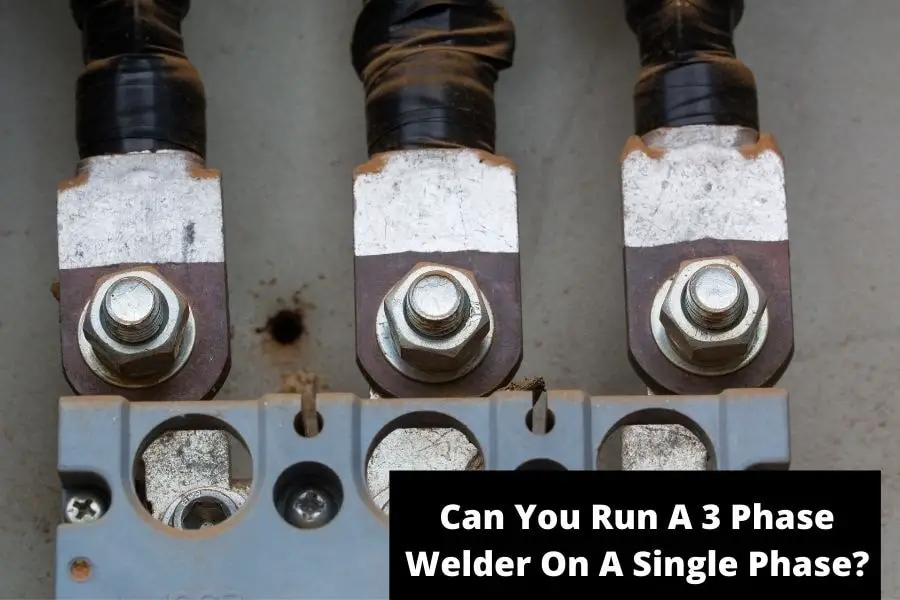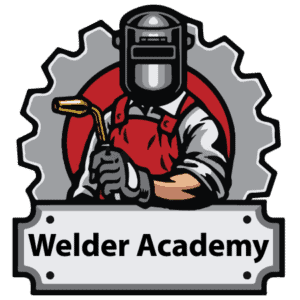
Welding is the most efficient way to join metals. You may have seen some welders run on 3-phase power and some on single phase. A 3-phase welder requires much more power than a single-phase welder. If you are stuck with a 3-phase welder without any compatible power source, you may wonder, can you run a 3 phase welder on a single phase?
You can run a 3-phase welder on single-phase power. There are diverse ways of doing this such as using a phase converter, a VFD, or by using a neutral wire. Although you have to compromise some power in doing so, there are feasible options to run a 3-phase welder on a single phase.
If you are new to a 3-phase welder, the very idea of 3-phase power is enough to perplex you. There are reasons and specific applications of 3-phase power. In many aspects, 3-phase power is the clear winner over single-phase power. Keep on reading if you want to know more!
How Can You Use 3 Phase Welder on Single-Phase Power?
There can be several reasons why you might need to run a 3-phase welder on a single phase. If you are using a 3-phase welder in your house, you need to run it in a single-phase because residential electricity is supplied by a single-phase.
There are quite a few ways to run a 3-phase welder on a single phase. Here are some methods to use a 3-phase welder on single-phase power:
1. Phase Converter
The phase converter can run a single-phase machine on three-phase power and vice versa. There are two types of phase converters; a static phase converter and a rotary phase converter.
Static phase converter only helps to kick start the machine. It does not help the machine to run for long. A rotary phase converter is what you need here. It converts 3-phase to single-phase and assists large pieces of machinery run longer. They are highly efficient in voltage management and power distribution.
To run a 3-phase welder using a rotary phase converter, you just have to run two wires from the motor to the converter and then from the converter to your power supply. Attach the inputs to outputs using two wires with stripped ends to convert.
2. VFD
A VFD or variable frequency drive is also known as AC drive, adjustable frequency drive, or variable speed drive. It controls the AC motor speed by varying voltage and frequency. VFD is one of the best options to run a 3-phase welder on a single-phase power line.
VFD is also very affordable. Before purchasing, make sure your welder’s amps match the rating of the VFD. You just have to wire the three-phase power of your motor to the output section of the drive and that’s it! VFD will take it from there.
3. Neutral Wire
You can use an extra neutral wire in a 3-phase system to convert it to a single-phase. Although this method is not as accurate as others, it gets the job done. Using a neutral wire ignoring the two existing phase wires shall convert the system to a single-phase allowing you to run the welder using single-phase power.
4. Using a Transformer
This is an advanced method and not recommended if you are completely unaware of what you are doing. My suggestion is to take the help of an expert before proceeding. To convert using a transformer, you first have to identify the 3 coils in 3 inductors of the welder.
The 1st coil has to be on 0 phase, the 2nd must be on 90 phase and the last one needs to be one 180 phases. Now, connect three capacitors between three coils and connect to the mainline to convert.
3-Phase vs Single-Phase Power – What is the Difference?
You might wonder what the difference is between 3-phase power and single-phase power. Well, there is a lot. Followings are some of the key differences between 3-phase and single-phase power:
| 3-Phase Power | Single-Phase Power |
| 3-phase power has 3 conductors or wires. | Single-phase power has 2 wires. |
| There may or may not be a neutral wire in a 3-phase system. | A Single-phase system has one phase wire and one neutral wire. |
| Power delivery is always consistent and steady in a 3-phase power system. | Power delivery is not consistent in a single-phase system due to peaks and troughs. |
| For delivering the same amount of power, a 3-phase system is more efficient. | For delivering the same amount of power, a single-phase system is less efficient. |
| The chance of failure is low in a 3-phase system. | The chance of failure is higher in a single-phase system because there is only one wire. If it fails, there is no power. |
| 3-phase power is suitable for large industries and commercial centers. | Single-phase power is ideal for houses and small residences. |
| Supply voltage in 3-phase power is 415 volts. | Supply voltage in 3-phase power is 230 volts. |
Why is 3-Phase Power Used?
3-phase power uses three wires to deliver power in the same circuit. Any one of the waves remains at the peak at every one-third of the cycle. This makes sure smooth, consistent, and flicker-free power delivery. For the same amount of power delivery, a 3-phase system requires less wire which minimizes the cost.
Additionally, it’s easy to minimize harmonic currents in a 3-phase power system. It’s also easy to balance loads in a 3-phase system. Plus, there is no need for neutral wires in a 3-phase system. As the chances of failure are low, 3-phase power is used in offices, industries, and large commercial areas.
Due to the advantages a 3-phase power system offers, it is used for residential electricity supply in many countries. The 3-phase power delivery system optimizes the electrical capacity utilization, thus increasing power efficiency.
Is it Possible to Have 3-Phase Powers at Home?
As I have already stated above, 3-phase power is suitable for large industries and commercial areas where a constant power supply is necessary. For home usage, single-phase power suffices. However, if you are determined to take 3-phase power at your home, it is possible. It’s not practical though, but you can still take it.
If your house has heavy electricity demand, your electricity distribution company should be able to provide it without any issues. You may have to acquire a permit from the local authorities if the law demands it.
Is it Worth Running a 3-Phase Welder On Single-Phase Power?
A Single-phase system delivers less power than a 3-phase system. There can be circumstances where you may need to use a 3-phase welder on single-phase power. The power delivery will be lower by default. Whether it’s worth it or not, that depends on what you are welding and the amount of power you need.
For example, welding in the shipbuilding industry is different from auto body repair. Shipbuilding requires more power for welding.
If you are welding mild steel more than 3/8 inches thick, you should opt for a 3-phase welder and run it on 3-phase power. To sum it up, the justification of running a 3-phase welder on single-phase power depends on the work field.
Conclusion
So, can you run a 3-phase welder on a single phase? With a bit of tinkering, it is possible. But it might not be worth it as the power delivery will not be optimum for running the 3 phase motor in the welder.
Both single-phase and 3-phase welders have their specific sectors. As single-phase power is more common in residential areas, you will need some workarounds to work with a 3-phase welder at home. I am confident that you won’t need anything else besides the ones I’ve discussed above. Have a wonderful day!
